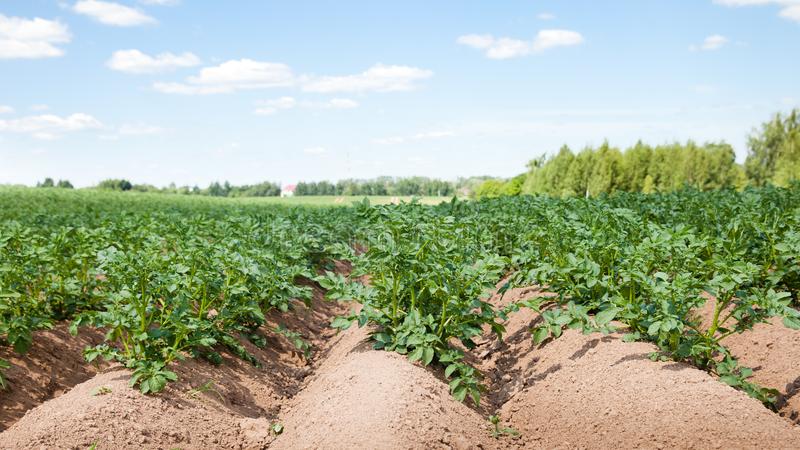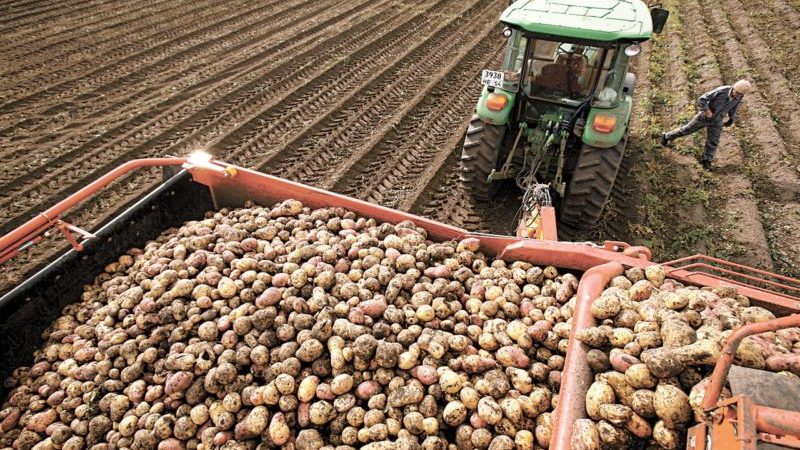What is the seeding rate of potatoes per 1 hectare in tons and how to calculate it correctly
When growing potatoes, in addition to selecting high-quality tubers and preparing the site, it is important to correctly calculate the seeding rate. To do this, take into account the mass of vegetables and determine the planting density. We will tell you what factors affect the consumption of material for sowing and how to independently calculate its amount.
The content of the article
Seeding rate of potatoes
When growing potatoes on an industrial scale, agronomic tables are used to calculate the rate. They take into account in detail the sowing distances of plants in a row, the size of the row spacing, the mass of the tuber, and in some, the variety. Calculations are based on mathematical formulas.

Per 1 hectare in tons
The seeding rate directly depends on the size of the seed and the density landing... The row spacing is determined by the dimensions of agricultural machinery and is most often 70 cm.The planting interval in the ridge ranges from 15 to 45 cm.
Average indices of potato seeding rate per 1 ha in tons at distance between plants in a row 30 cm:
- standard tuber size (50-60 g) - you will need from 2.3 to 2.8 tons of seed;
- fine fraction (30-40 g) - from 1.9 to 2.4 tons;
- large (80–90 g) - 3.8–4.3 tons.
The value varies depending on climatic conditions, soil fertility, varietal characteristics. Calculations are made with some margin, taking into account the errors in the size of potatoes and their possible rejection.
For 1 hundred square meters in kilograms
On small farms and household plots, the seeding rate is calculated in kilograms, since it is more convenient to use "running" weight measures.
Here is a variant of such a calculation for a plot of 10 × 10 m (1 weaving) in the form of a square, with a width between rows of 70 cm, a distance between tubers of 40 cm, and a weight of one - 80 g:
- number of rows - 14;
- row length - 10 m, each with 28 tubers;
- in total, 392 plants will be able to be planted on a hundred square meters (14 × 28 = 392).
How many potatoes are needed for planting in this case: 392 × 80 (weight of one tuber) = 31360 g = 31.4 kg.
How to determine the consumption of potatoes
The seeding rate calculation is not 100% accurate. The indicators obtained in reality often deviate significantly, both up and down.
What does it depend on
Potato consumption directly depends on its size. Large tubers weighing 80–90 g require a large feeding area and are planted in a row at intervals of 35–40 cm, and small ones at 25–30 cm intervals. The more uniform the seed fraction, the more reliable the planting consumption calculations will be.
Reference. If there is a shortage of seed material in small farms, pre-cut large healthy tubers weighing at least 80–100 g are used. In this case, each part should weigh 40–50 g and have at least 2 eyes.
The climatic conditions of the region also affect the consumption of seed. In the northern regions, in the Urals and in Siberia, large potatoes weighing 80–100 g are used. Due to the supply of nutrients, they give healthier shoots and are able to withstand the vagaries of the weather. In the southern regions, a smaller fraction is planted.
The type and fertility of the soil play a significant role. The better the soil is fertilized, the more plants it will be able to plant. However, over-compaction of the planting will lead to the fact that the tubers will grow small.
Factors affecting consumption
In order to correctly calculate the consumption rate of potatoes, it is important to take into account the following 3 factors.

Variety
Any variety is always tested by agronomists for optimal conditions cultivation... The seeding rate of potatoes is affected by its early maturity - it is taken into account when choosing a scheme landing.
Early ripening varieties are planted more densely - according to the scheme 70 × 25 cm (where 70 is the row spacing, and 25 cm is the distance between potatoes in a row), mid-ripening - not less than 70 × 30 cm, late-ripening - up to 70 × 40 cm.
Planting density
Planting density of potatoes affects the future harvest and the fraction of grown tubers. This indicator is taken into account in the formula for calculating the seeding rate. It depends on the early maturity of the variety, the mass of planting material, soil fertility and climatic features of the region.
The following density is considered optimal:
- standard tubers weighing 50–80 g - up to 55–65 thousand / ha;
- small (25-50 g) - up to 65-70 thousand / ha;
- large (80–100 g) - about 40–55 thousand / ha.
In areas with good moisture and rich soils, potatoes are planted densely - according to the scheme 70 × 20 ... 25 cm, in arid zones - sparsely (70 × 30 ... 35 cm).
Also, the seeding density is influenced by the region of cultivation:
- North and North-West of the country - from 50 to 55 thousand bushes per 1 ha;
- The central part and the South - depending on the composition of the land (about 45-50 thousand bushes are planted on sandy soils, up to 55-60 thousand on loam);
- Siberia and the Urals - 45–57 thousand tubers per hectare;
- Far East - potatoes of the middle fraction are planted with a density of 45 to 50 thousand per hectare.
Planting method

Traditionally, seed potatoes are planted in single rows with row spacings ranging from 70 to 90 cm (this depends on the size of the agricultural machinery or planting "in a shovel"). This method is reflected in agronomic tables, and it is not difficult to calculate the consumption rate from them.
Double row planting is not as popular as traditional planting and is used on small farms. There are several such technologies: for example, sowing potatoes in the ridges according to the Dutch method, planting according to the Meatlider.
The width of double beds using this method is 40–45 cm, and the distance between them is 90–110 cm. Seed material is planted at intervals of 30 cm.
Instructions for self-settlement
Anyone can calculate the seeding rate for potatoes, even if there are no agronomic tables at hand. For this, it is important to know the average tuber weight and the planting density recommended in specific conditions.
Let us recall the values of the second indicator:
- 65–70 thousand / ha - for small potatoes (25–50 g);
- 55–65 thousand / ha - for tubers of the middle fraction (50–80 g);
- 40–55 thousand / ha - for large specimens (80–100 g).
The rate for calculating potatoes per hectare is determined by the formula:
H = G × M,
where H - planting rate (t / ha), G - planting density (thousand / ha), M - tuber weight (g).
Example
For clarity, we will calculate the seeding rate for potatoes of the Bellarosa variety with the traditional method of growing in one ridge.
We will use tubers with an average weight of 90 g as seed material. Planting density at this weight is 40–55 thousand / ha. However, the variety is early maturing and requires a tighter planting. Therefore, we will focus on the upper limit - 55 thousand / ha.
Then the planting rate (H) = 55 (G) × 90 (M) = 4950 kg / ha = 4.95 t / ha.
Conclusion
The potato seeding rate is not universal. It depends on the conditions for growing crops in a particular farm, size and varietal characteristics of tubers, planting density. The consumption of vegetables on the site is determined using agronomic tables or calculated independently based on the above formula.